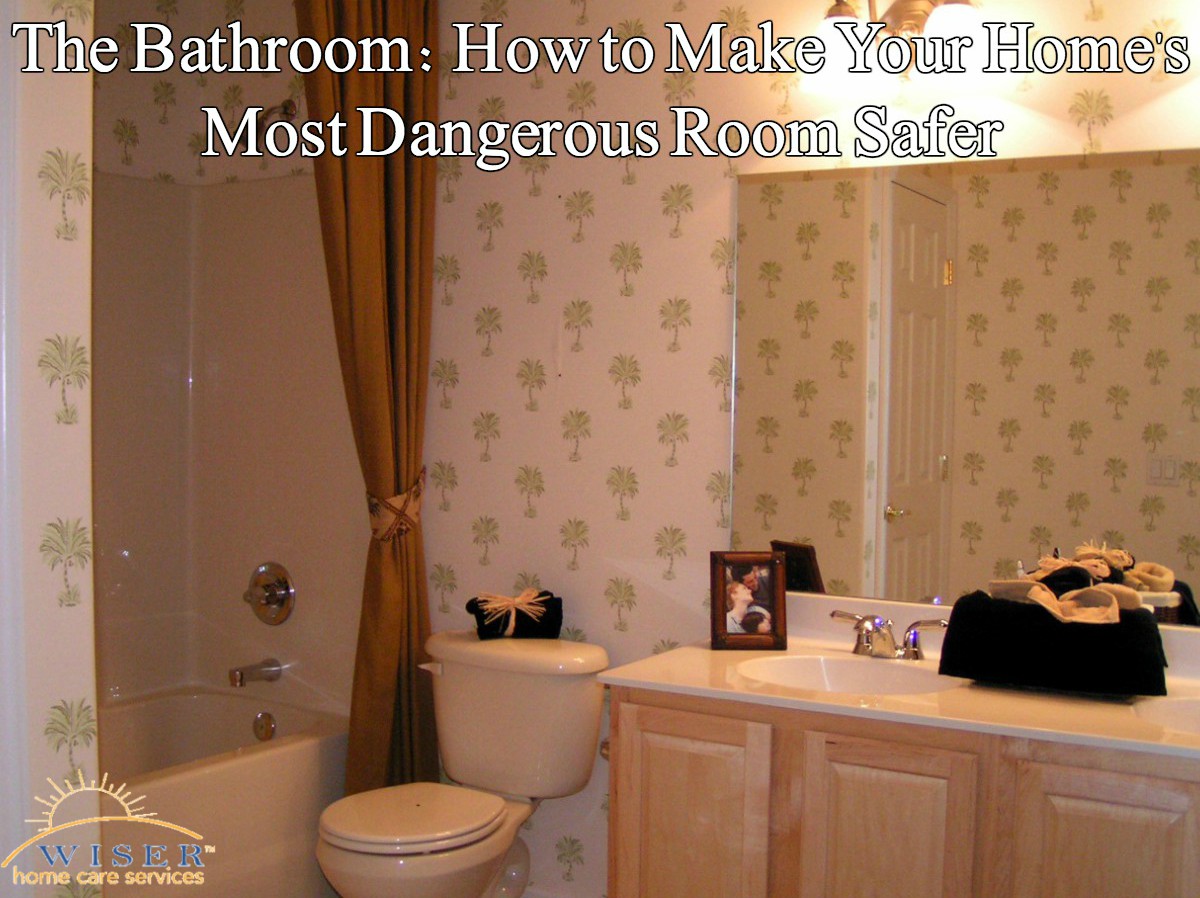“Help! I’ve fallen, and I can’t get up.” Many may remember this phrase from a popular television commercial by a medical alert company known LifeCall. Even though it aired back in the 90’s, the age of the internet has brought it back to popularity as a meme.
Despite the comical nature it has morphed into today, the danger of senior falls is still a prevalent issue. In fact, the National Institute of Aging reports that more than 1 in 3 seniors over the age of 65 fall each year, and 80% of these falls take place in the bathroom.
Considering the combination of steam, standing water, smooth flooring and transitions to-or-from the toilet or shower/tub, it is easy to see how the bathroom is one of the most dangerous rooms in you or your elderly loved one’s home. In an effort to reduce bathroom-related injuries January is widely celebrated as National Bath Safety Month.
The following tips will help keep your senior loved one safe in the bathroom and beyond.
Keep the Floors Clear
A normal bathroom floor is typically slick just by itself. Add in water/steam, trash, loose clothes, or improperly secured rugs and you have a recipe for slips, trips and falls. To make sure your bathroom floor stays clean we suggest:
- Drying water as soon as possible
- Securing rugs to the floor with grip tape
- Keeping a laundry hamper in a safe place in the bathroom for loose clothing
- A trash bin next to the toilet
Height Matters
Another important aspect of safe bathroom design for seniors is the height of bathroom amenities. Specifically, the height of the sink, toilet, and bath/shower entry. While a complete bathroom overhaul would be ideal, it can be expensive. A raised toilet seat with support bars can make the transition between standing to sitting easier. If you have the money, we also suggest lowering or raising the sink height to match the appropriate height of your senior.
The Tub
In a perfect world, each senior friendly bathroom would include a walk-in tub/shower combo. However, these can be very expensive. If this is out of budget, we recommend finding a tub/shower with a low entry threshold. We also recommend investing in a shower chair. Finally, non-slip mats are another important addition to the inside and exit of the tub/shower.
Make Sure Toiletries are Easy to Reach
The risk of an unintended fall increases when your loved one has to bend over or uncomfortably stretch to reach something they need. Make sure items such as shampoo, soap, razors, loofahs, and other toiletries are placed in an easy to reach location. In addition, you will want to make sure toilet paper is within a comfortable reach of someone sitting on the toilet. Finally, place towel hooks within a safe distance from the shower and sink.
Install Grab Bars
Strategically placed grab bars can help increase your elderly loved one’s safety in the bathroom. We recommend placing grab bars near the tub and toilet.
Lower the Heat
While some people may love a hot shower, we recommend lowering the heat setting on your loved one’s hot water heater. This will prevent them from accidentally scalding themselves with bath or shower water that is too hot. The maximum recommended temperature is 120F.
Improve the Lighting
One final tip we would like to leave you with is to improve the lighting in your loved one’s bathroom. Many bathrooms are dimly lit, and this only increases your loved one’s risk of slipping or tripping over something in the bathroom. A well-lit bathroom will reduce this risk.
Make sure you discuss these tips with your elderly loved one. Although, they won’t eliminate the risk of falling altogether, it will greatly reduce their risk. Feel free to contact us if your loved one is still having trouble with bathroom safety, or you feel it would be safer for a professional to help. We can help your family establish a care plan to personally accommodate your loved one’s needs.

